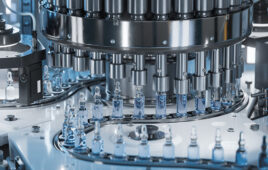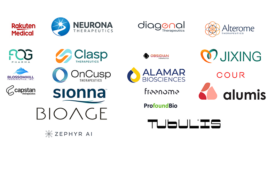
[Image courtesy of Adobe Stock]
Swiss pharma giants Roche Pharmaceuticals and Novartis had R&D ratios of 29.68% and 30.09%, respectively. While still substantial, these figures pale in comparison to Merck’s commitment to research and development.
Across the board, pharma giants are investing heavily in R&D, with most firms dedicating between about 14% and 30% of their revenues to research and development efforts.
The data in the chart below highlights the varying levels of investment in research and development among the top pharmaceutical companies. While Merck & Co. leads the pack with an R&D ratio of 50.79% (in part owing to a decision to classify its $10.3 billion Prometheus acquisition as R&D), other companies like Roche Pharmaceuticals, Novartis, and Lilly also demonstrate a strong commitment to R&D investment, with ratios ranging from 27% to 30%.
Top pharma R&D 2023: Companies investing the most
Outside of Merck & Co.’s eye-popping R&D figures in 2023, J&J is taking a more moderate approach, with a 3.3% increase in R&D expenses to $15.1 billion, while actively prioritizing assets in a few core areas, including oncology, neuroscience, and cardiovascular segments, among others. The company expects significant revenue from its neuroscience assets, such as seltorexant and aticaprant, by 2030. Similarly, AbbVie is prioritizing immunology, oncology, and neurology in its R&D. The firm is spending $7.7 billion in 2022, representing 13.2% of its total revenue. The company made progress in these areas while facing setbacks in cystic fibrosis.
AbbVie has also bolstered its pipeline through the acquisition of ImmunoGen for $10.1 billion and forged a partnership with REGENXBIO. Swiss giants Roche and Novartis are making targeted bets to drive strategic growth. Both firms ramped up R&D spending by 6% in 2023, with Roche investing CHF 11.5 billion ($12.1 billion). Meanwhile, Novartis is investing $12.1 billion in investments in oncology and neuroscience. Additionally, Roche is advancing its cancer pipeline with bispecific antibodies, while Novartis is progressing novel radioligand therapies like Pluvicto and Lutathera across multiple cancer types.
Comparative analysis of R&D spend over time among five pharma giants
The graph below illustrates the research and development (R&D) expenditure of five major pharmaceutical companies—AstraZeneca, Johnson & Johnson Innovative Medicine, Novartis, Roche Pharmaceuticals, and Merck & Co. from 2020 to 2023 in USD.
The sortable table below reflects the relatively consistent R&D spending rates across the industry. More than half of the listed companies have R&D ratios exceeding 20%.
In addition to identifying the companies spending the most on R&D, it also sheds light on the companies with the most conservative R&D investment strategy. AbbVie and Sanofi boast the lowest R&D ratios at 14.13% and 14.49%, respectively. While this suggests lower proportional spending on R&D, AbbVie’s significantly higher revenue means it still outspends Sanofi in absolute terms. Novo Nordisk achieved a slightly lower R&D Ratio (13.97%) despite raking in less revenue than Sanofi. In 2023, Novo Nordisk helped reshape Denmark’s economy owing, in part, to the explosive growth of semaglutide.
Filed Under: clinical trials, Drug Discovery and Development, Neurological Disease, Oncology



